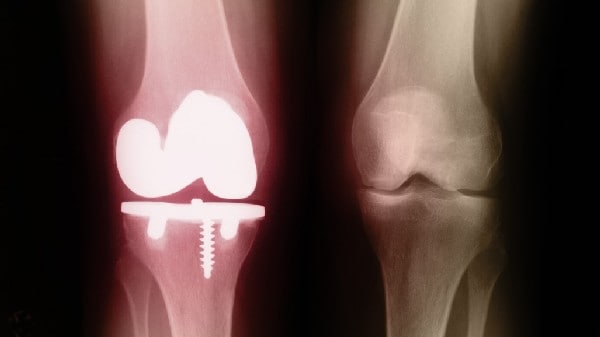
Doctoring broken bones in the future could be easier and simpler – thanks to a metallic glass material that can be used to make dissolvable screws, pins or plates. Bone fractures or breaks are routinely fixed in place with metal implants to encourage healing. These are usually made from corrosion-resistant steel or titanium, but have to be removed in a second operation once the bones have mended.
In an effort to make this extra surgery a thing of the past, materials scientists led by Jörg Löffler at ETH Zurich in Switzerland have designed a metallic glass that dissolves harmlessly in the body. The idea is to make small supporting objects from this material, such as pins or nails, which would disappear over time.
Strength without the bubbles
The biggest challenge has been finding a suitable material. Requirements include strength, flexibility and durability, coupled with the ability to be absorbed without toxic side-effects. The best candidates for the job are magnesium alloys – but when these dissolve in the body they produce bubbles of hydrogen gas, which hinder bone growth.
To get around this problem, the Swiss team adjusted the components of the alloy to 60% magnesium, 35% zinc and 5% calcium, moulded in the form of metallic glass. This is made by rapid cooling of the combined mixture of molten metals – a process that prevents the conventional metallic structure from forming. Instead, the metals have an amorphous glass-like structure that is brittle but strong.
In animal studies, there was no sign that hydrogen bubbles were forming. “By changing the composition of the alloy, we believe that we are changing the corrosion reaction that takes place,” explains Bruno Zberg, lead author on the paper, which is published this week in Nature Materials. The researchers also found that they could adjust the speed of corrosion by varying the zinc content of the alloy, which may prove useful when designing different types of implant.
Slow dissolution
“The glasses usually dissolve at a rate of around one millimetre per month – although it depends on the size of the implant and location in the body,” Zberg told physicsworld.com. “Either way, the number of metal ions being released into the bloodstream is relatively low and they are diluted in the blood quite quickly.”
“This is certainly a novel approach and an interesting concept, but there are still issues to address,” says Robert Hill at Barts and the London School of Medicine and Dentistry, UK. “Early steel implants suffered from fatigue failure after they corroded – so it is important to ensure that this new material does not become critically weakened in the same way.” Another danger, Hill notes, is that threading on screws could corrode, or fibrous tissue could form around shrinking implants, making them come loose.
A further question remains over whether the dissolving metals will help or hinder the growth of new bone in their vicinity. Zberg notes that this also depends on the quantity being released – but acknowledges that these questions will all need further investigation in the future.



